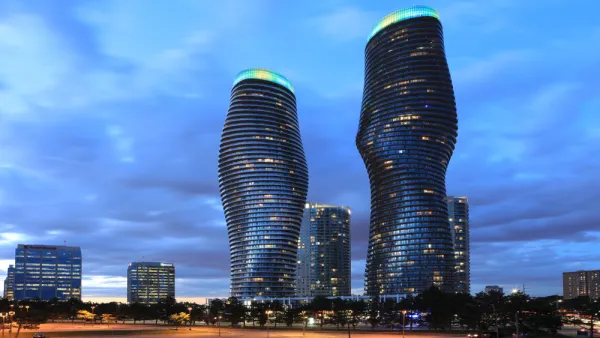As our suburbs diversify, the most affordable commercial districts found in such areas (often in strip malls) become an important entry point for immigrants to build their 'American Dream'. Kaid Benfield asks if such opportunities deserve protection.
"There is little question that suburban strip malls represent an unsustainable architecture," writes Benfield. "Totally automobile-dependent, marked by large surface parking lots, and remarkably inefficient at using land, strip malls generate much more pollution and consume much more in the way of resources on a per capita basis than do more walkable, urban shopping districts. Such urbanist thinkers as Galina Tachieva (Sprawl Repair Manual), June Williamson and Ellen Dunham-Jones (Retrofitting Suburbia) are absolutely correct in urging that, as these malls age and decline, they should be replaced with better, greener forms."
"And yet: As these properties have declined, so have their rents, making them affordable to small, often entrepreneurial businesses. Particularly as immigrants have settled in inner suburbs (where many of these fading commercial strips are), businesses owned and patronized by the immigrant population have occupied many of these spaces, in some cases alongside small start-ups owned by longtime community residents as well."
Planners have recognized the adverse impacts of redevelopment on affordable housing and responded with inclusionary zoning laws to help prevent displacement. "But, as far as I know," adds Benfield, "there is no comparable, widely understood ethic to protect small, often minority businesses that are harmed by otherwise beneficial neighborhood change, and I am wondering whether there should be."
FULL STORY: As we remake suburbs, should we guard against "commercial gentrification"?

National Parks Layoffs Will Cause Communities to Lose Billions
Thousands of essential park workers were laid off this week, just before the busy spring break season.

Retro-silient?: America’s First “Eco-burb,” The Woodlands Turns 50
A master-planned community north of Houston offers lessons on green infrastructure and resilient design, but falls short of its founder’s lofty affordability and walkability goals.

Delivering for America Plan Will Downgrade Mail Service in at Least 49.5 Percent of Zip Codes
Republican and Democrat lawmakers criticize the plan for its disproportionate negative impact on rural communities.

Test News Post 1
This is a summary

Test News Headline 46
Test for the image on the front page.

Balancing Bombs and Butterflies: How the National Guard Protects a Rare Species
The National Guard at Fort Indiantown Gap uses GIS technology and land management strategies to balance military training with conservation efforts, ensuring the survival of the rare eastern regal fritillary butterfly.
Urban Design for Planners 1: Software Tools
This six-course series explores essential urban design concepts using open source software and equips planners with the tools they need to participate fully in the urban design process.
Planning for Universal Design
Learn the tools for implementing Universal Design in planning regulations.
EMC Planning Group, Inc.
Planetizen
Planetizen
Mpact (formerly Rail~Volution)
Great Falls Development Authority, Inc.
HUDs Office of Policy Development and Research
NYU Wagner Graduate School of Public Service




























